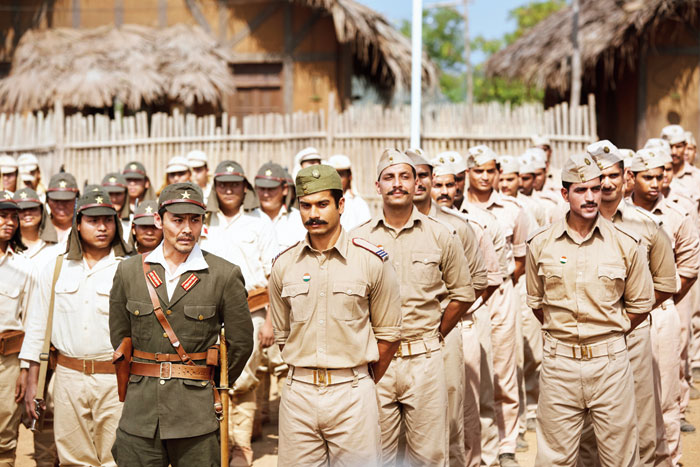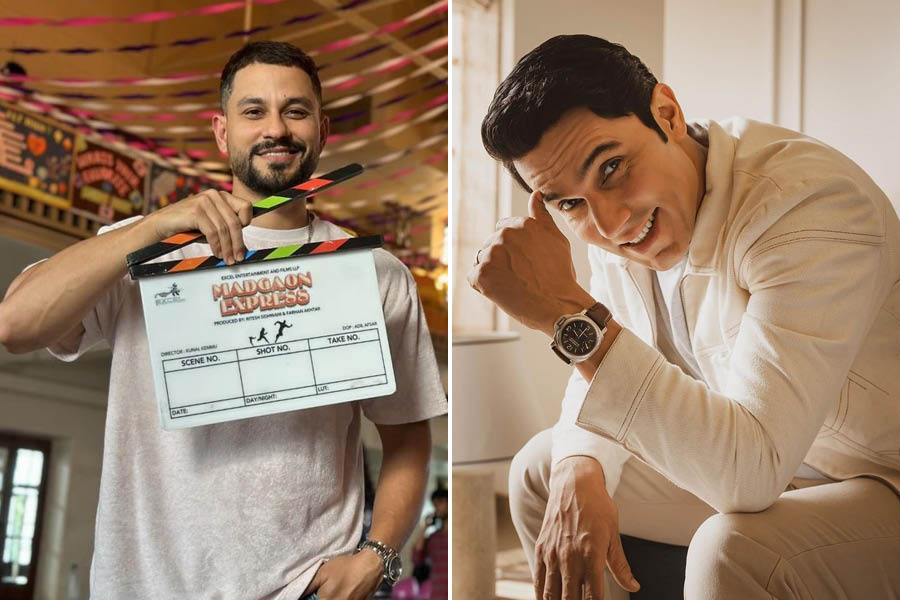Kabir Khan — the man behind films as diverse as Kabul Express, Ek Tha Tiger, Bajrangi Bhaijaan and Tubelight — is one of the most prolific filmmakers in Bollywood today. The 49-year-old director has just debuted in the digital space with The Forgotten Army on Amazon Prime Video, in which he attempts to tell the story of Netaji Subhas Chandra Bose’s Azad Hind Fauj aka Indian National Army. Kabir is also heavily into the post-production of his April film ’83 that chronicles India’s World Cup win of 1983 and has Ranveer Singh as Kapil Dev leading a large ensemble of actors.
Last week, Kabir was in Calcutta to promote The Forgotten Army. In between sips of hot tea to soothe his throat, the filmmaker chatted with The Telegraph at Aqua at The Park on the legacy of the INA and why ’83 is a coming-of-age story.
Very little about the Indian National Army is documented on screen, with most of it being focused around Subhas Chandra Bose. For me, The Forgotten Army worked because it told the story of the INA through its soldiers…

Still from the series
That was the main point of the story… to tell it through the eyes of its foot soldiers. You are right that wherever INA has been discussed, it’s been done through the prism of Netaji. We wanted to tell what really happened to this army between 1942 and 1945 and the attempt was, of course, to tell it dramatically. Otherwise, audiences don’t tune in, you know. This was actually an army that we know nothing about.
Ever since the series dropped, the overwhelming reaction that I have got is, ‘Oh my god… we knew nothing about this!’ Some people are thanking us for telling this story.
The Forgotten Army, of course, takes inspiration from my debut documentary that I made in the ’90s. The story just stayed with me. I was fresh out of film school and got this amazing opportunity to travel with Captain Lakshmi Sahgal and Gurbaksh Dhillon (both of whom were part of the INA). We retraced the route that the INA had taken and I was shocked by the enormity of the movement, by the enormity of what happened in those three years, and the fact that we knew almost nothing about it.
Why didn’t it happen sooner? Did the research even after the documentary was done take longer?
Frankly, my goldmine of research was the time I spent with Lakshmi Sahgal and Gurbaksh Dhillon. That came straight from them, standing at the same place where the stories happened and you will not get that in any archives. I was told history literally by the people who made that history. I wrote it initially as a film screenplay, but I realised pretty soon that nobody would give me such a big budget (laughs) if I wanted to make it as one of my first features. After every film, I kept wondering whether I should go back to it. I knew that whenever I made it, it would be one of my most ambitious projects.
Also, in those times there were no OTT platforms. It’s only when OTT platforms came in, I realised that this story is better told as a series and not as a feature. As a series, you can spend a little more time, be truer to the story. Even now, people are telling me that five episodes is too short. But for me, this is the story and this is what I wanted to tell… in a film, it would have been even shorter.
You can’t measure success of web content, simply because there are no box office numbers. What then, for you, tells you that The Forgotten Army has been a success, at least in terms of what you set out to convey?
Honestly, box office is not the only measure of success. My biggest high has been the feedback that’s coming in. People have sent me photographs of their family members who were with the INA. They are saying stuff like, ‘We are numb… we are crying’. I am taken aback by the fact that the messages and calls for this have been five times more than what I have got for my films, and I have made some big-ticket films, even if I say so myself. I get a certain sense of fulfilment because this is a story that I have lived with for so many years and I am happy I could put it out there.
I am sure there is much more that can be told about the INA…
For me, the main motive was to broadly tell the story of how it started and how it ended and who these people are. If you expand this, you can get into many more discussions… you can get into the whole stigma attached to the INA, their liaison with the Japanese, which we also touched upon, and what the Japanese did in Singapore, for example. But that can be told only after the audience first knows what happened in those three years. That window, at least, has opened up with The Forgotten Army.
Given what’s playing out in the country now, do you think this story of a band of INA soldiers is now more relevant than ever, given they were rebels and anti-establishment?
Absolutely! What the INA did, what they stood for and what their ethos was is very relevant today. I think INA would be relevant any time we decided to tell their story. Today, of course, more than ever.
What, for you, is the enduring legacy of Subhas Bose and the INA?
Just the vision that they had. Take Rani Jhansi Regiment, for example. More than seven decades ago, when they decided to make a regiment comprising women, it showed their vision in terms of what they thought should be the role of women in society. That showed what their dream of India was. They thought so strongly about secularism and about communities coming together… their regiments were not based on communal lines, unlike say, the British Indian Army.
Does this spur you on to do more work in the web space?
I have to be honest. When I started off, I thought this would be a one-off and that I am essentially a filmmaker. But having done this and with the kind of support I got from Amazon — a budget of this magnitude with no stars is unheard of in the film industry — I have decided that the story will now tell what platform I should tell it on, whether it’s film or a web series.
War, conflict and interpersonal relationships in the larger scheme of bringing nations together are the mainstays of your stories. In that sense, a cricket story is completely new to you, something that you are attempting in your April film ’83
Yes and no. At face value, ’83 looks different… it’s not about conflict, but it is set against the backdrop of how India as a nation was viewed at that time, which was reflected in the attitude that they had towards the Indian cricket team. And how things changed with the World Cup win. For me, ’83 is not a cricket film… it’s the coming-of-age story of a country. It’s how Indians felt that day… how it overnight gave us a sense of confidence. It’s about human relationships… the story of how this team came together and literally pulled each other up to become world champions.
On a daily basis, what inspires you as a filmmaker?
Anything can inspire me. A small two-inch story in a newspaper can inspire me… something I watch on TV can make me think…. I am not talking about television news, unless I plan to make a disaster film! (Laughs) Sometimes, just exisiting material, like ’83. It was material that was there for 35 years and then you suddenly read it and go, ‘Oh my god! What an incredible story for a film!’ Shooting documentaries has taken me to 80 countries and that serves as reserve raw material for me.
I know that travel is a big part of who you are. What kind of a traveller are you?
I am an explorer. Wherever I go — and this Mini (Mathur, Kabir’s wife) will also tell you — is that I pick up my still camera, my two-three lenses and just disappear into the streets of a city. Just keep walking and doing a lot of street photography.










